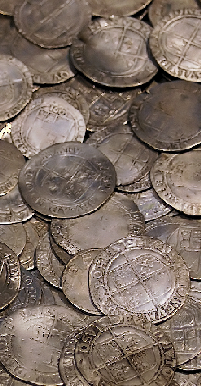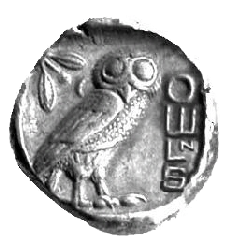
● Next Meeting Status:
Cancelled



● Host Society for the
BANS 2011 Congress
held in Southport


Where to next?

Wilkinson’s Penny Token?
Is It Possible To Identify Wilkinson’s First Token?
Dalton and Hamer’s monumental work ‘The Provincial Token Coinage of the 18th Century’ offers collectors today an incomparable work of reference on their chosen subject, ninety years and more after its first publication. Every die and edge variety known to the authors and their collaborators was published, nearly all of them illustrated, and over the years relatively few additions and amendments have had to be made.
For the major series, such as the Anglesey Druids and the Wilkinson Iron Master tokens, Dalton and Hamer chose a relatively unscientific method of indexing the pieces, firstly by date, which is straightforward enough, but then by design features: the number of acorns in the obverse wreath in the case of the Druids, and the absence or position of a full stop in the obverse legend with the Wilkinsons.

This method allows for accurate indexing but doesn’t help at all if the collector wishes to interpret the series, to determine which coins were struck earlier, and which later, within a particular year.
The Wilkinson series falls neatly into three design groups: the Ship, starting and finishing in 1788; the Forge, starting in 1787 and ending in 1795, and Vulcan, starting in 1790 and finishing in 1792. [These dates are for the genuine coins, and do not include spurious dates on the contemporary copies.]
The earliest of the Wilkinson coins are those of the Forge type, dated 1787, of which
D&H list twenty-

All of the 1787 tokens have the same general characteristics. On the obverse, there
is a right facing profile of John Wilkinson with the legend around: IOHN WILKINSON
IRON MASTER, all within a beaded or toothed border. On the reverse, a workman holds
a piece of work under a trip hammer, with a furnace to the right, behind, and the
date below in an exergue, all within a beaded or toothed border (or a chain-
All of the 1787 tokens, that is, except DH359. This token conforms to the general character of the others, apart from two major differences. The border on both obverse and reverse is entirely plain; and the reverse shows, in addition to the workman, forge and furnace, the rear wall of the workshop, with a semicircular window, high up above the hammer. These features do not occur again in the Wilkinson series.

Is it possible that this coin, with its unique design elements, was the first of the Iron Master's tokens? Certainly, all the subsequent coins had a decorated, rather than a plain, border, and the rear wall and window were deleted, simplifying the reverse design. Possible confirmation of this interpretation comes from D&H who note that DH359 was also struck in silver and copper gilt, materials which were not listed for any of the other 1787 tokens.
Given the experimental nature of the design, and the production of specimen coins, it seems highly likely that DH359 represented the first striking of the Wilkinson tokens. Then, for whatever reason, the beading was added to the borders, and the wall and window removed from the workshop, changes which, once made, thereafter remain constant until the end of the Forge tokens in 1795.
What might the reason be for the change in design? There isn't anything wrong either technically or aesthetically with the original design, which would require modification. Could the reason actually be to do with Wilkinson's intentions?

It seems as though, at first, the Iron Master wanted to circulate his tokens as pennies,
but that this valuation was abandoned because of opposition from the public -
So far, no pieces have been specifically identified as being Wilkinson pennies, but if we are correct in placing the DH359 tokens as the first issue, it may be that these are indeed the pennies. In this case, it would presumably be important to Wilkinson to ensure that these, and only these, were redeemable for a penny, hence the change of design when the tokens were reassigned as halfpence.

All the above is speculative. DH359 may be the first. If it is, it may be the penny, if the pennies were ever circulated. But the theory does seem to tick the boxes, and that is some kind of start!
There is more to be considered and, in due course, this paper will be updated.
In the meantime, if you would like to express a view on this suggestion, please click on the scroll which will take you to our Feedback page from where you can send us a message.
Chris Leather

Send Us A Message
Hover your cursor to
see the tokens in detail


Dalton & Hamer Warwickshire 340


Dalton & Hamer Warwickshire 359

